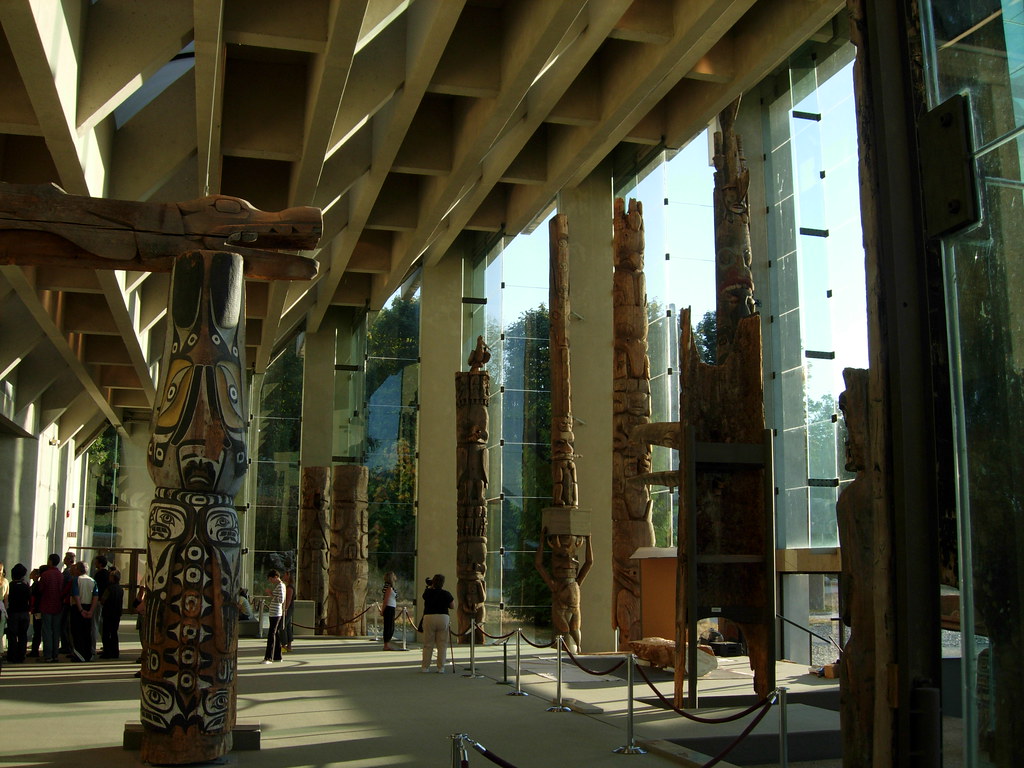Browse "Science & Technology"
-
Article
Morse Code
Morse Code (Les Maîtres, 1967-70). Montreal instrumental and vocal rock group whose members included Raymond Roy (drums), Michel Vallée (bass guitar), and Jocelyn Julien (guitar). Christian Simard (keyboards, voice) was added in 1968.
"https://development.thecanadianencyclopedia.ca/images/tce_placeholder.jpg?v=e9dca980c9bdb3aa11e832e7ea94f5d9" // resources/views/front/categories/view.blade.php
https://development.thecanadianencyclopedia.ca/images/tce_placeholder.jpg?v=e9dca980c9bdb3aa11e832e7ea94f5d9
-
Article
Mud Lake Stream Archaeological Site
The Mud Lake Stream archaeological site is located along the Canada/United States border at the northern end of Spednic Lake, in southwestern New Brunswick.
"https://d2ttikhf7xbzbs.cloudfront.net/media/media/807e1461-34ef-495f-a85c-f3a2ddcc6a54.jpg" // resources/views/front/categories/view.blade.php
https://d2ttikhf7xbzbs.cloudfront.net/media/media/807e1461-34ef-495f-a85c-f3a2ddcc6a54.jpg
-
Article
Mukluk
Mukluks are soft hide boots designed by Inuit peoples for manoeuvrability and warmth in northern environments.
"https://d2ttikhf7xbzbs.cloudfront.net/media/media/28aed678-44e6-4a48-867e-a8097ca1b283.jpg" // resources/views/front/categories/view.blade.php
https://d2ttikhf7xbzbs.cloudfront.net/media/media/28aed678-44e6-4a48-867e-a8097ca1b283.jpg
-
Article
Multimedia Communications
Multimedia is the combined use of several media, such as video, graphics, sound, lighting and text for the purpose of education or entertainment. More specifically, it refers to the use of digitized media displayed on a computer.
"https://development.thecanadianencyclopedia.ca/images/tce_placeholder.jpg?v=e9dca980c9bdb3aa11e832e7ea94f5d9" // resources/views/front/categories/view.blade.php
https://development.thecanadianencyclopedia.ca/images/tce_placeholder.jpg?v=e9dca980c9bdb3aa11e832e7ea94f5d9
-
Article
Multiple Sclerosis
Multiple Sclerosis (MS) is an autoimmune disease that impacts the body’s central nervous system. As of September 2020 an estimated 2.8 million people are living with MS worldwide. Canada has one of the highest rates of MS in the world with over 90,000 Canadians living with the disease. There is no known cure for MS, but treatments can help address symptoms and slow the progression of the disease.
"https://development.thecanadianencyclopedia.ca/images/tce_placeholder.jpg?v=e9dca980c9bdb3aa11e832e7ea94f5d9" // resources/views/front/categories/view.blade.php
https://development.thecanadianencyclopedia.ca/images/tce_placeholder.jpg?v=e9dca980c9bdb3aa11e832e7ea94f5d9
-
Article
Muscular Dystrophy Canada
Muscular Dystrophy Canada (MDC) was founded in 1954 by a group of parents who had children with Duchenne muscular dystrophy. Now a national voluntary health organization with offices across Canada, MDC is dedicated to fighting over 40 different neuromuscular disorders.
"https://development.thecanadianencyclopedia.ca/images/tce_placeholder.jpg?v=e9dca980c9bdb3aa11e832e7ea94f5d9" // resources/views/front/categories/view.blade.php
https://development.thecanadianencyclopedia.ca/images/tce_placeholder.jpg?v=e9dca980c9bdb3aa11e832e7ea94f5d9
-
Article
Museum of Anthropology
The Museum of Anthropology (MOA) at the University of British Columbia was established in 1949. The MOA’s current location opened in 1976. The MOA’s collection includes ethnographic and archaeological objects from around the world and it is widely recognized for its collection of Northwest Coast Indigenous Art. (See also Northwest Coast Indigenous Peoples in Canada.) In addition to research, the museum provides public programs and exhibitions. It also serves as a teaching museum, providing training in museum studies and conservation. (See also Anthropology in Canada; Archaeology.)
"https://d2ttikhf7xbzbs.cloudfront.net/museumofanthropology/greathallmoa.jpg" // resources/views/front/categories/view.blade.php
https://d2ttikhf7xbzbs.cloudfront.net/museumofanthropology/greathallmoa.jpg
-
Macleans
Music on the Web
The crowd at Vancouver's venerable Commodore nightclub roars as the band on stage cracks out the opening chords of a rock anthem. Beneath its aural assault, Leader of Men is a song about self-doubt - an irony that eludes most in the audience. The four members of the group Nickelback don't mind.This article was originally published in Maclean's Magazine on March 20, 2000
"https://development.thecanadianencyclopedia.ca/images/tce_placeholder.jpg?v=e9dca980c9bdb3aa11e832e7ea94f5d9" // resources/views/front/categories/view.blade.php
https://development.thecanadianencyclopedia.ca/images/tce_placeholder.jpg?v=e9dca980c9bdb3aa11e832e7ea94f5d9
-
Article
Music Therapy
Music therapy. As defined by the Canadian Association for Music Therapy, music therapy is 'the skilful use of music to aid the physical, psychological and emotional integration of the individual, and in the treatment of an illness or disability.
"https://development.thecanadianencyclopedia.ca/images/tce_placeholder.jpg?v=e9dca980c9bdb3aa11e832e7ea94f5d9" // resources/views/front/categories/view.blade.php
https://development.thecanadianencyclopedia.ca/images/tce_placeholder.jpg?v=e9dca980c9bdb3aa11e832e7ea94f5d9
-
Article
Muskeg
Muskeg (from Cree maskek and Ojibwe mashkiig, meaning “grassy bog”) is a type of northern landscape characterized by a wet environment, vegetation and peat deposits. Chiefly used in North America, the term muskeg escapes precise scientific definition. It encompasses various types of wetlands found in the boreal zone, including bogs, fens, swamps and mires. In Canada, muskeg and other peatlands cover up to 1.2 million km2, or 12 per cent of the country’s surface.
"https://d2ttikhf7xbzbs.cloudfront.net/media/new_article_images/Muskeg/Muskeg 1.jpg" // resources/views/front/categories/view.blade.php
https://d2ttikhf7xbzbs.cloudfront.net/media/new_article_images/Muskeg/Muskeg 1.jpg
-
Macleans
Nasa's Columbia Shuttle Disaster
This article was originally published in Maclean’s magazine on February 10, 2003. Partner content is not updated. FOR LONG MINUTES, the crowd of family, friends, dignitaries and spectators stood at the end of the airstrip in Cape Canaveral, Fla., waiting and hoping for a familiar white speck in the distant blue sky. By the time the countdown clock reached zero, it was clear the reunion would never come.
"https://development.thecanadianencyclopedia.ca/images/tce_placeholder.jpg?v=e9dca980c9bdb3aa11e832e7ea94f5d9" // resources/views/front/categories/view.blade.php
https://development.thecanadianencyclopedia.ca/images/tce_placeholder.jpg?v=e9dca980c9bdb3aa11e832e7ea94f5d9
-
Article
Canada Energy Regulator (Formerly National Energy Board)
The National Energy Board (NEB) was established 1959. The NEB was responsible for the import and export of energy, international and interprovincial pipelines and international power lines (see Electric-Power Transmission). In 2019, the NEB was replaced by the Canada Energy Regulator (CER). Regulations made under the NEB remain in effect under the CER.
"https://d2ttikhf7xbzbs.cloudfront.net/media/media/d582fdd1-da33-4f4e-bb6a-d3573745bd88.jpg" // resources/views/front/categories/view.blade.php
https://d2ttikhf7xbzbs.cloudfront.net/media/media/d582fdd1-da33-4f4e-bb6a-d3573745bd88.jpg
-
Article
National Energy Program
The National Energy Program (NEP) was an energy policy of the government of Canada from 1980 through 1985. Its goal was to ensure that Canada could supply its own oil and gas needs by 1990. The NEP was initially popular with consumers and as a symbol of Canadian economic nationalism. However, private industry and some provincial governments opposed it. A federal-provincial deal resolved controversial parts of the NEP in 1981. Starting the next year, however, the program was dismantled in phases. Global economic conditions had changed such that the NEP was no longer considered necessary or useful. The development of the oil sands and offshore drilling, as well as the rise in Western alienation and the development of the modern Conservative Party of Canada, are all aspects of the NEP’s complicated legacy.
"https://d2ttikhf7xbzbs.cloudfront.net/media/single_use_images/Trudeau_Lougheed.jpg" // resources/views/front/categories/view.blade.php
https://d2ttikhf7xbzbs.cloudfront.net/media/single_use_images/Trudeau_Lougheed.jpg
-
Article
National Research Council of Canada
The National Research Council of Canada, federal Crown Corporation responsible to Parliament through the minister of industry. The NRC was formed in 1916 as the Honorary Advisory Council for Scientific and Industrial Research.
"https://development.thecanadianencyclopedia.ca/images/tce_placeholder.jpg?v=e9dca980c9bdb3aa11e832e7ea94f5d9" // resources/views/front/categories/view.blade.php
https://development.thecanadianencyclopedia.ca/images/tce_placeholder.jpg?v=e9dca980c9bdb3aa11e832e7ea94f5d9
-
Article
National Resources Mobilization Act
The National Resources Mobilization Act was passed 21 June 1940 by Parliament. It represented the government's response to the public clamour for a more effective Canadian war effort that arose in the wake of the stunning German victories in Belgium and France.
"https://development.thecanadianencyclopedia.ca/images/tce_placeholder.jpg?v=e9dca980c9bdb3aa11e832e7ea94f5d9" // resources/views/front/categories/view.blade.php
https://development.thecanadianencyclopedia.ca/images/tce_placeholder.jpg?v=e9dca980c9bdb3aa11e832e7ea94f5d9
